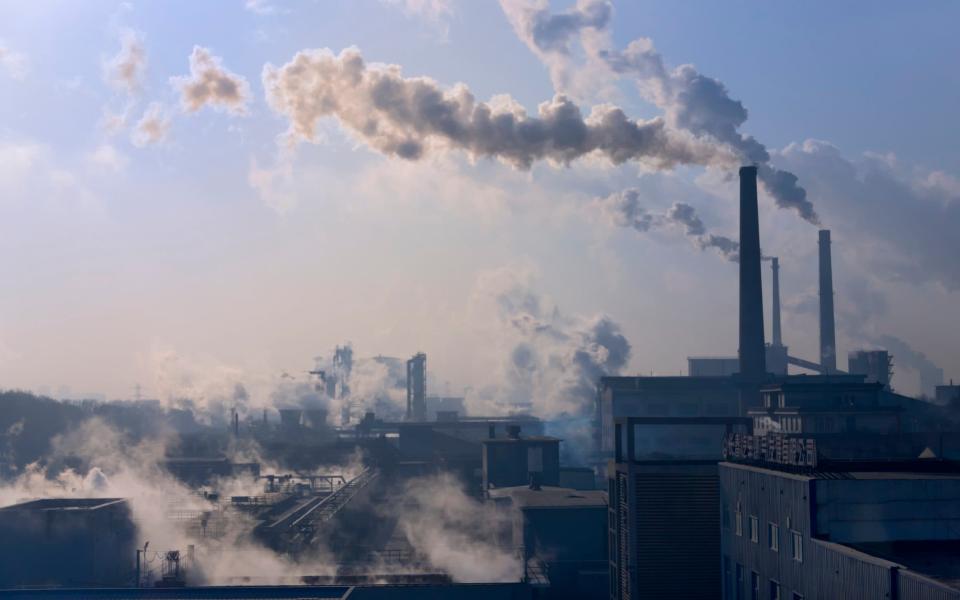China factories releasing thousands of tonnes of illegal ozone-depleting gas, study finds

Industries in north-eastern China have released large quantities of an ozone-depleting gas into the atmosphere in violation of an international treaty, scientists have said.
Since 2013, annual emissions of the banned chemical Chlorofluorocarbon-11 (CFC-11) from that region have increased by about 7,000 tonnes, according to a report in peer-reviewed journal Nature.
“Our measurements showed ‘spikes’ in pollution when air arrived from industrialised areas” in China, said co-lead author, Sunyoung Park from Kyungpook National University in South Korea.
CFC-11 was widely used in the 1970s and 1980s as a refrigerant and to make foam insulation. The 1987 Montreal Protocol banned CFCs and other industrial aerosols that chemically dissolve protective ozone 10-40km (six to 25 miles) above Earth’s surface, especially over Antarctica and Australia.
Reports last year from the Environmental Investigation Agency blamed Chinese foam factories in the coastal province of Shandong and the inland province of Hebei, which surrounds Beijing. Suspicions were strengthened when authorities subsequently shut down some of these facilities without explanation.
To probe further, an international team of atmospheric scientists gathered additional data from monitoring stations in Japan and Taiwan.
The team also ran computer simulations that confirmed the origin of the CFC-11 molecules. “We didn’t find evidence of increased emissions from Japan, the Korean peninsula or any other country,” added Luke Western, a post-doctoral researcher at the University of Bristol.
The findings also has implications for the fight against climate change.
Joanna Haigh, a professor at Imperial College London, said last year in reaction to the initial report: “Perhaps even more serious is the role of CFCs as long-lived greenhouse gases.”
Pouring more CFC-11 into the air could also delay ozone levels from returning to normal levels, scientists warn. “If emissions do not decline, it will delay the recovery of the Antarctic ozone hole, possibly for decades,” said Paul Fraser, an honorary fellow the CSIRO Climate Science Centre in Australia.
CFC-11 persists in the atmosphere for about half a century, and still contributes about a quarter of all chlorine – the chemical that triggers the breakdown of ozone – reaching the stratosphere. Two decades ago, CFCs – more potent by far as greenhouse gases than carbon dioxide or methane – accounted for about 10% of human-induced global warming.
At its most depleted, around the turn of the 21st century, the ozone layer had declined by about 5%.
Today, the “hole in the ozone” over the South Pole is showing clear signs of recovery. But a study last year found that the ozone layer was unexpectedly declining in the lower stratosphere over the populated tropical and mid-latitude regions.
Up to now, CFCs and other molecules have mainly eroded ozone in the upper stratosphere, and over the poles. That study identified two possible culprits: industrial chemicals not covered by the Montreal Protocol – called “very short-lived substances” (VSLSs) – and climate change.
After the ban came into force, global concentrations of CFC-11 declined steadily until about 2012. However, last year scientists discovered the pace of that slowdown slowed by half between 2013 and 2017. Because the chemical is not naturally occurring, the change could only have been produced by new emissions.Lead author Matt Rigby, an atmospheric chemist at the University of Bristol, said: “CFCs are the main culprit in depletion of the stratospheric ozone layer, which protects us from the sun’s ultra-violet radiation.”
Evidence pointed to east Asia, but could not nail down the exact origin. “Our monitoring stations were set up in remote locations far from potential sources,” explained co-author Ron Prinn, a professor at MIT.

 Yahoo News
Yahoo News 